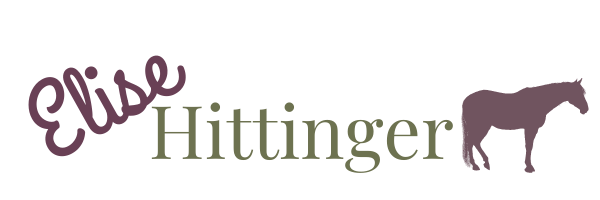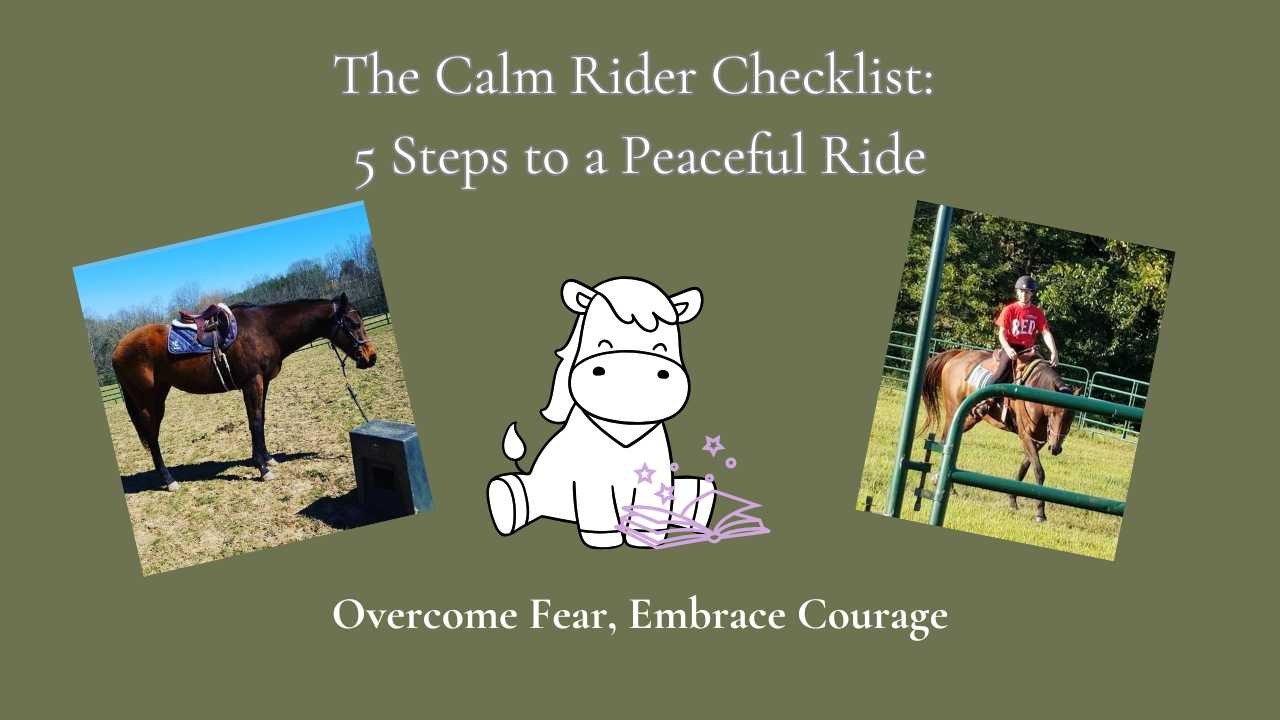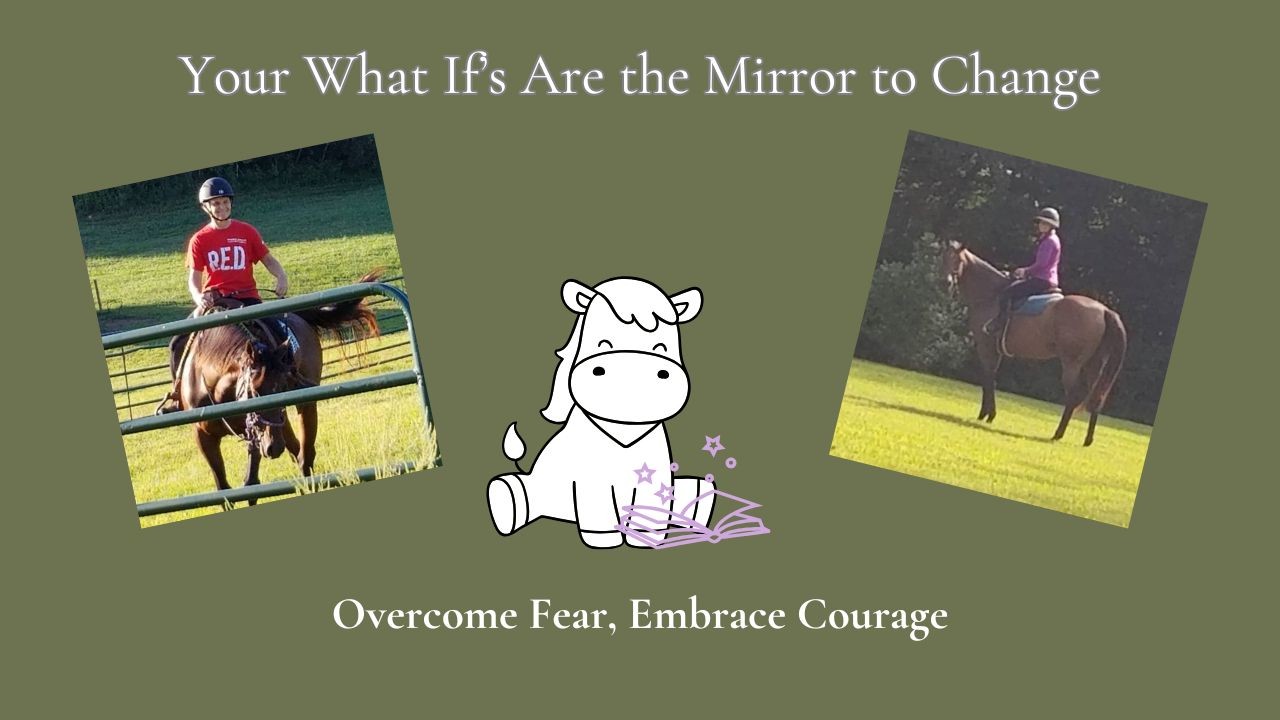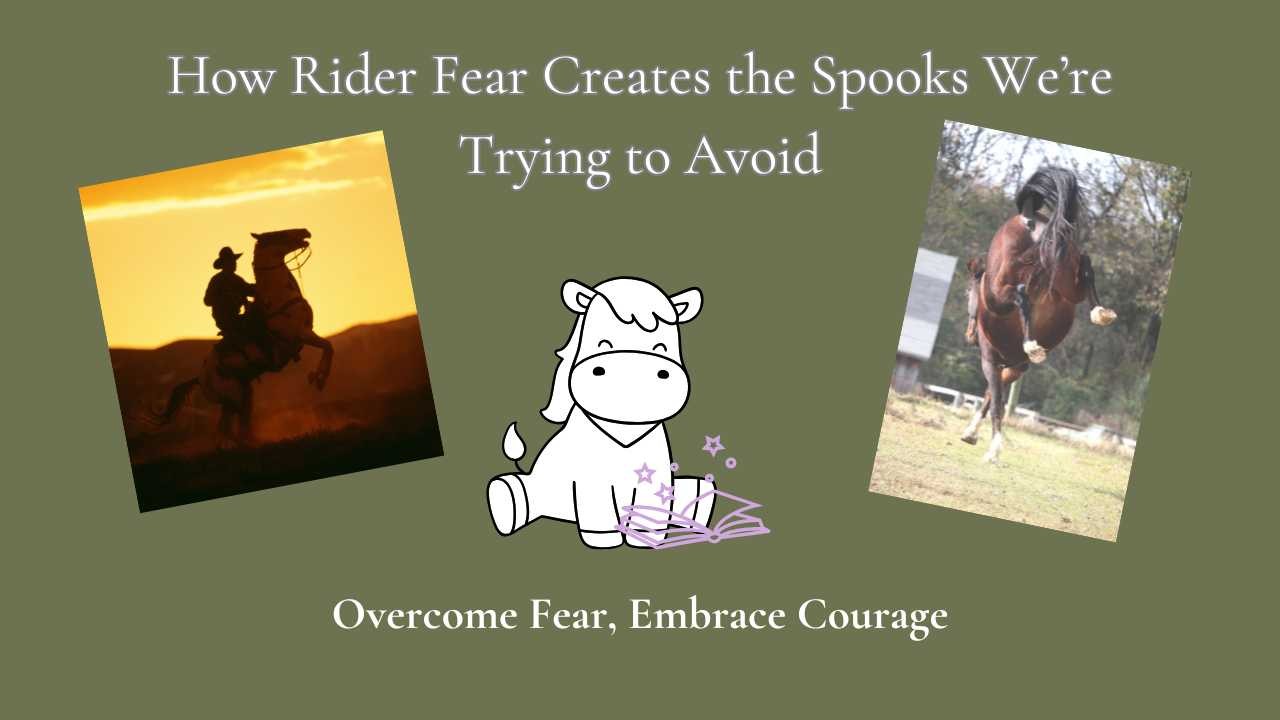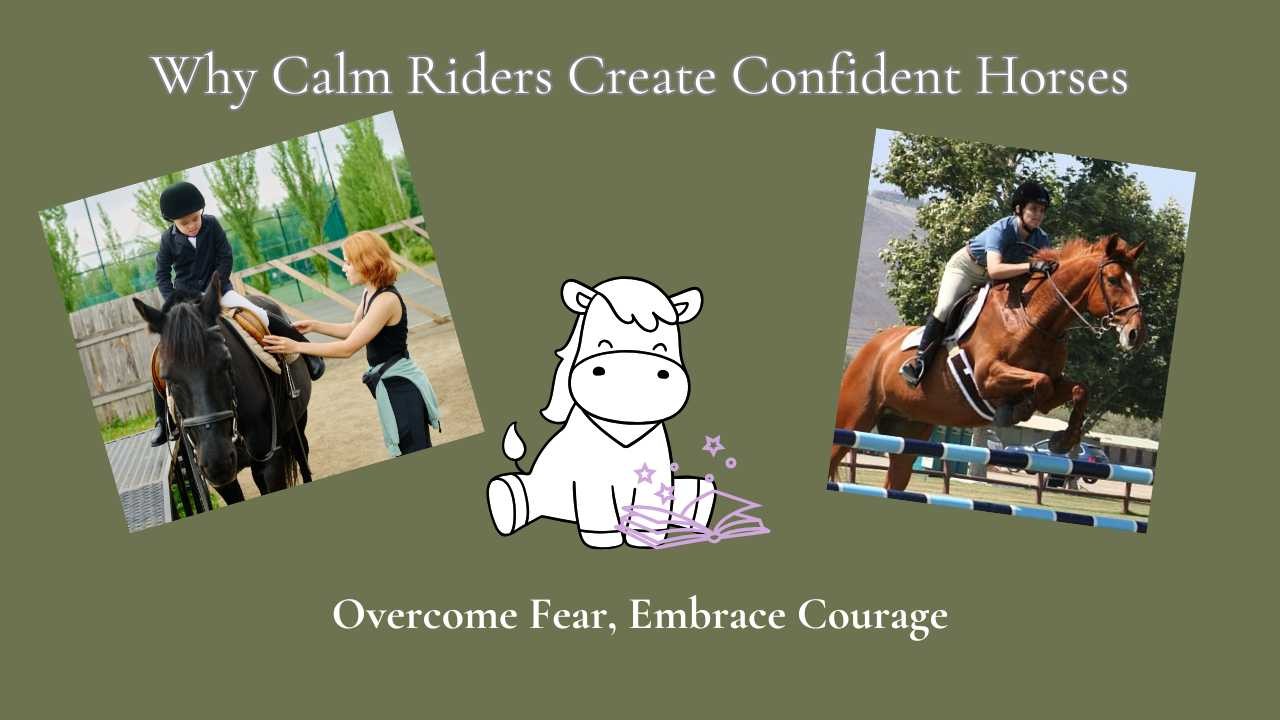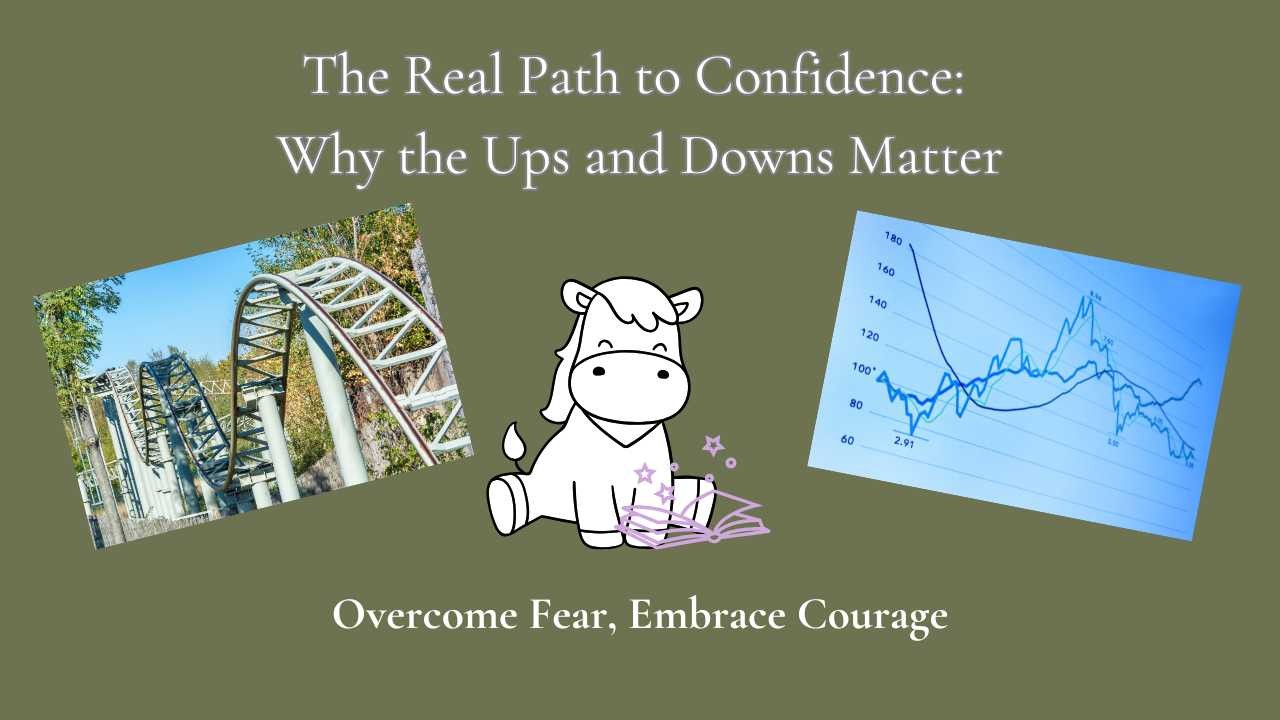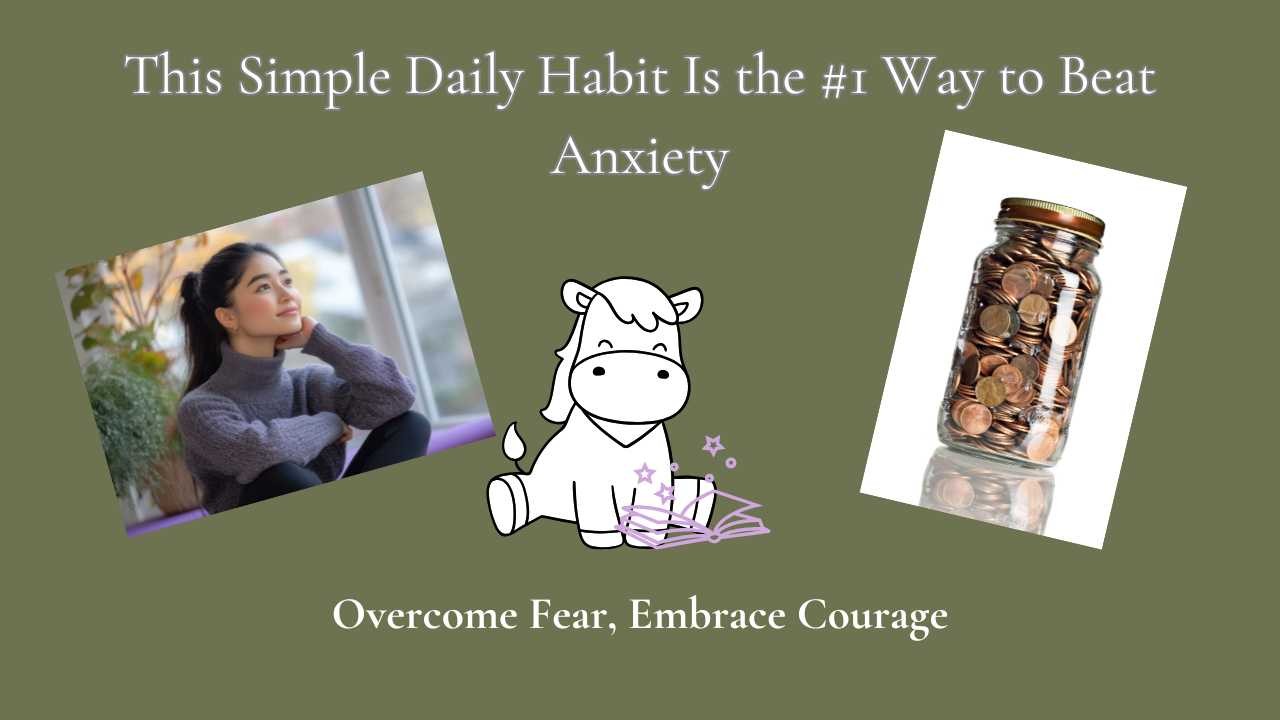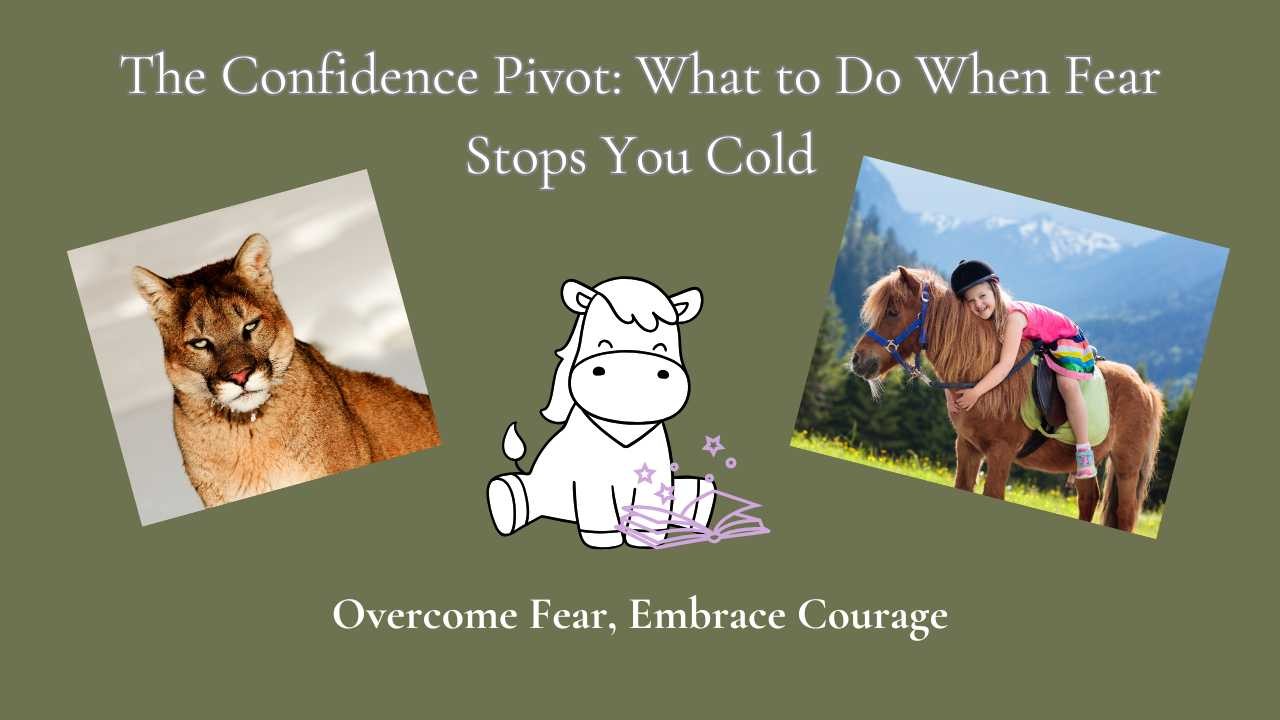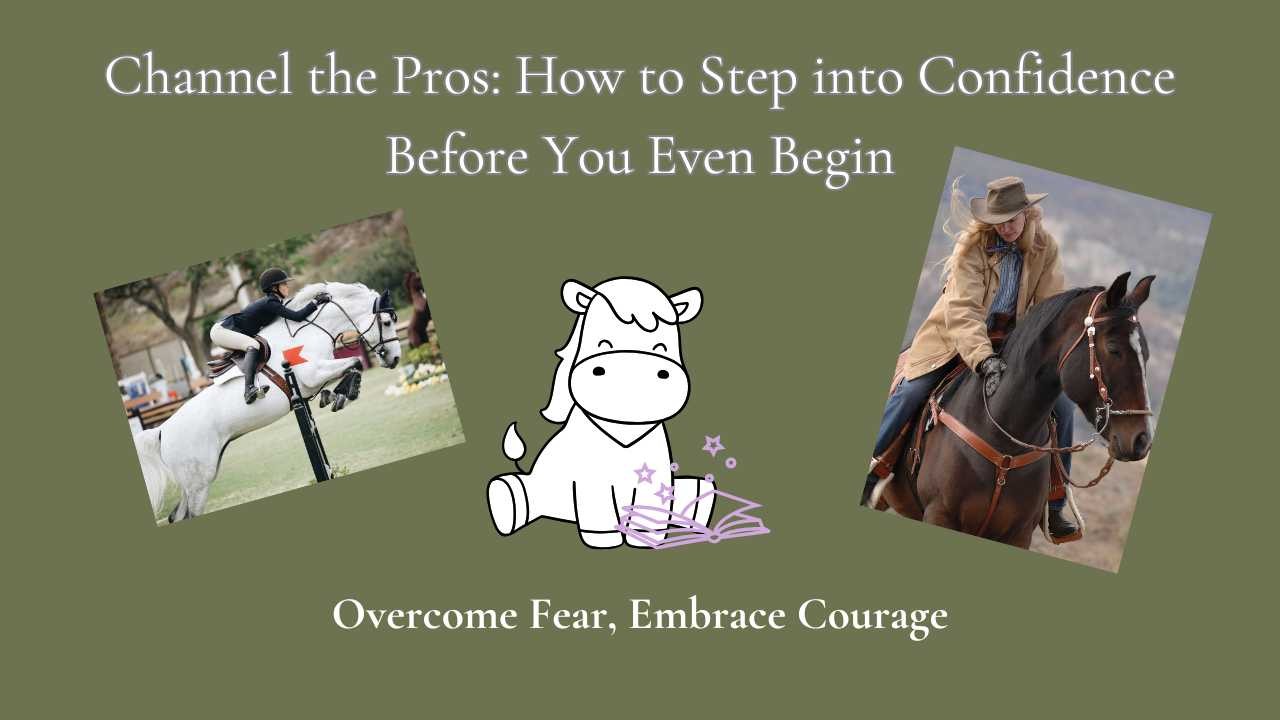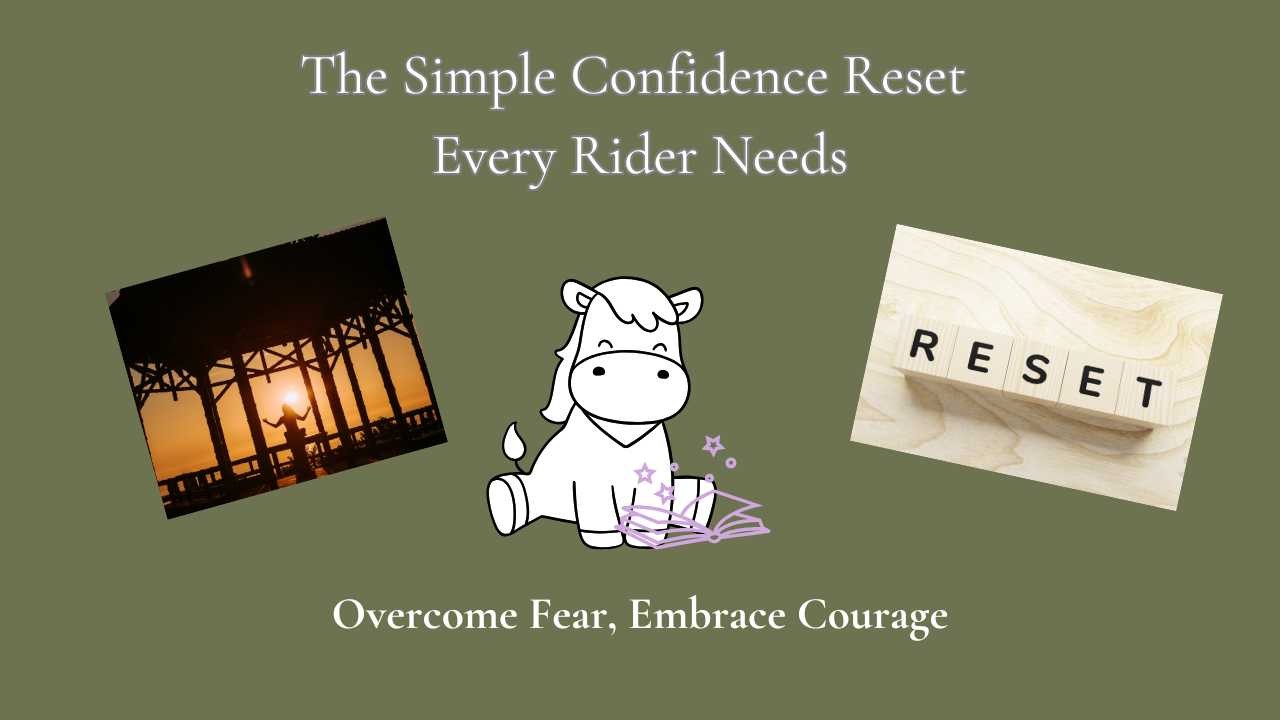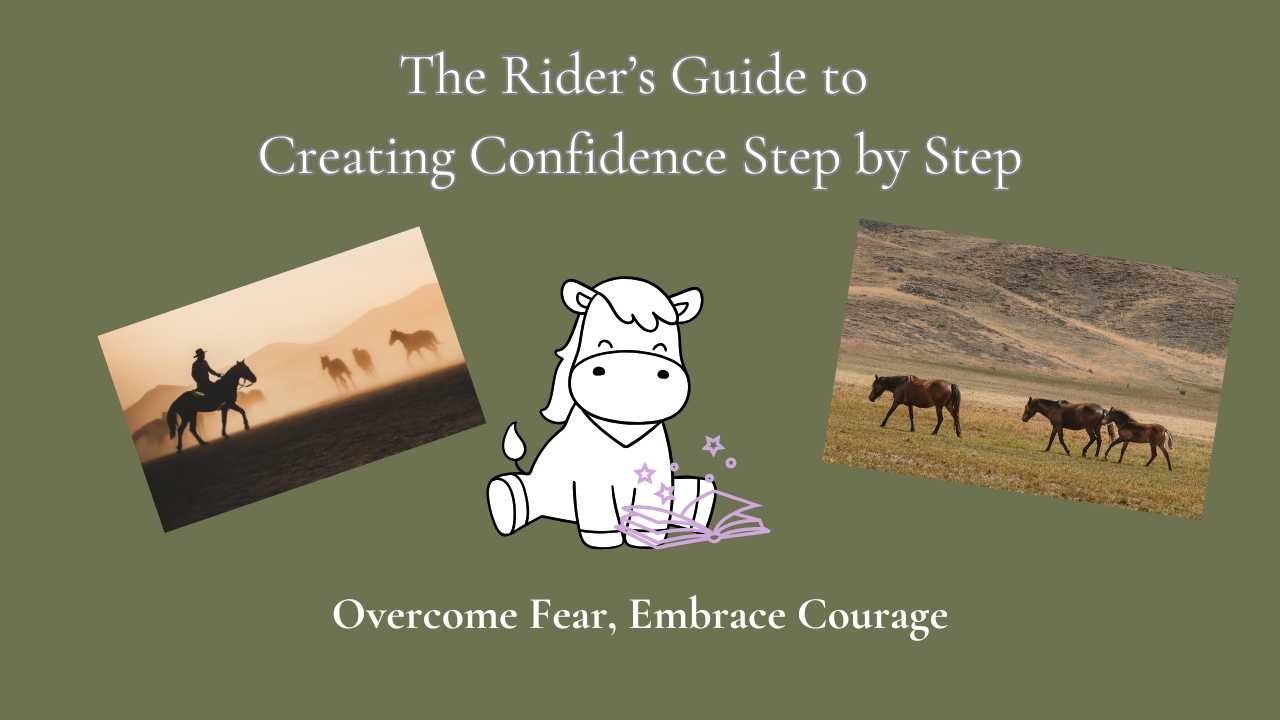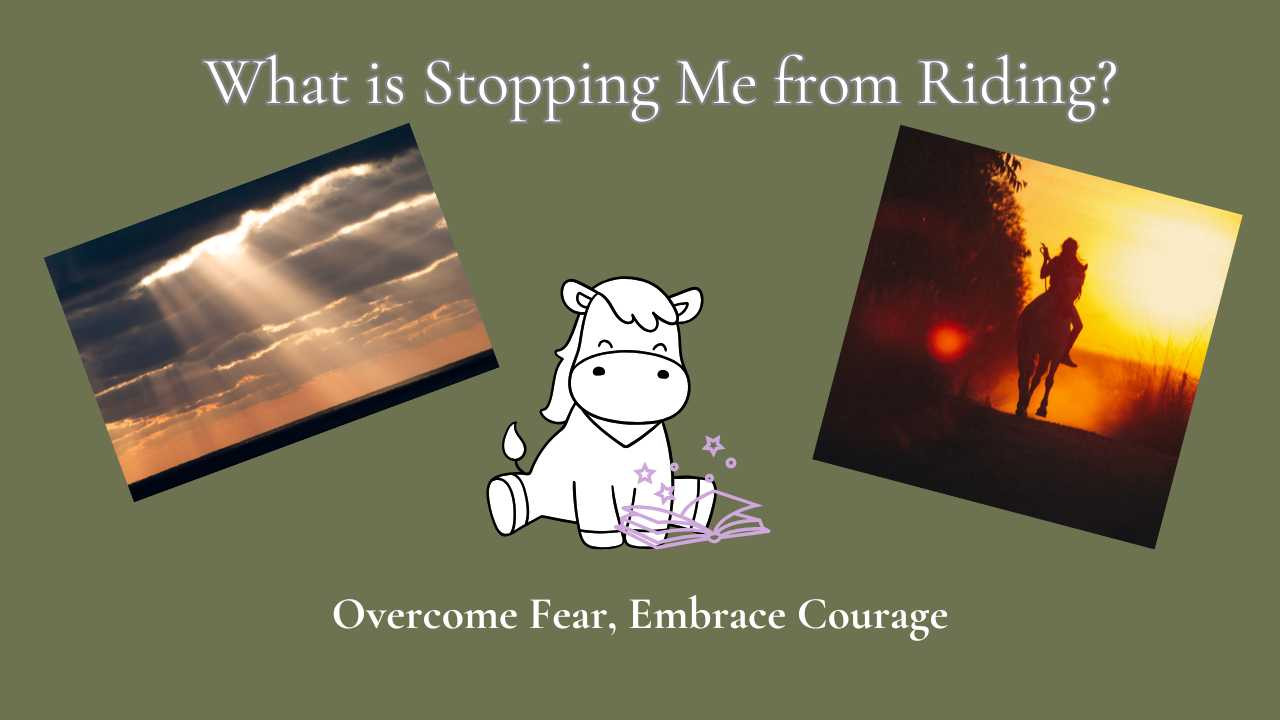
The more I read the question from my coach, the more the tears welled up inside me. I didn’t want to let them fall. I didn’t want to really see the answer.
Not because the question or the answer was scary—but because I knew the moment I was honest about it, I would also see the solution. And once the solution was visible, I couldn’t keep hiding behind the stories I’d told myself. I couldn’t cling to the old excuses.
How many times do we do this? How many times do we hide in our excuses—or worse—blame others, blame our horses, blame the weather or the time or the age or the saddle that doesn’t fit quite right? I’ve done all of it.
But here’s what happened when I finally let the light in: I realized that naming what was really stopping me from riding meant there was nothing truly holding me back from riding. It was both terrifying and freeing.
At first, the truth felt heavy—like maybe it was too much. But then… something shifted. The little girl inside me, the one who used to ride for the sheer joy of it, started to stir. I could feel her again. That joy started to bubble up.
And just like that, I knew—I was free.
So now I want to ask you this same question. Make a little time for yourself today and ask, with an open heart:
“What is really stopping me from riding?”
Let yourself look. Let the tears come if they need to. Because once you have the answer, you also have the power.
And I promise—I’m right here, cheering you on.
Let me know if you need more help and support for this. I love being a courage coach and helping others work through this when they need a little extra. Calm Ride Strategy Chat
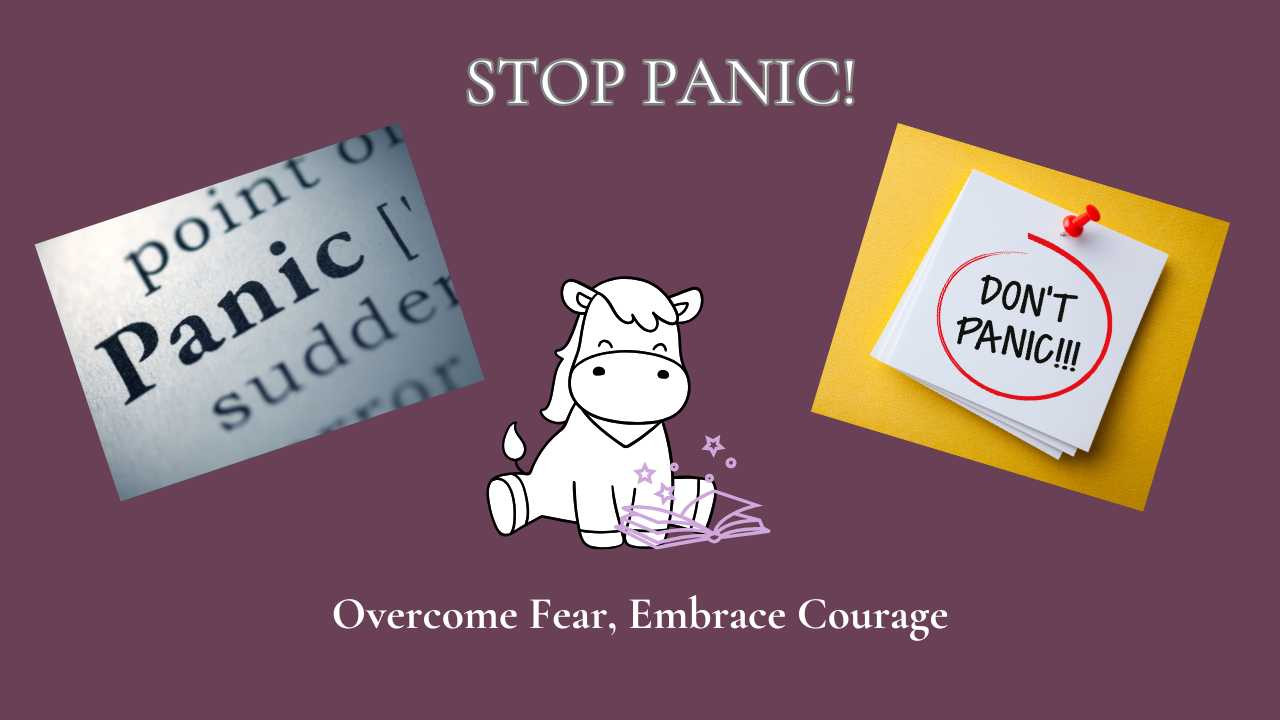
For most of my life, I would have said: absolutely not.
Panic attacks come when they come, and there's nothing you can do about it—right?
Panic attacks come when they come, and there's nothing you can do about it—right?
At least, that’s what I believed. Until I started asking deeper questions.
My First Memory of Panic
The first panic attack I remember happened when I was 3 or 4. We were at LAX, waiting for my dad to arrive from a trip. I looked up and couldn’t find my mom anywhere.
In a flash of desperation, I spotted my dad—or so I thought—and ran to grab his leg. I clung to it with everything I had, eyes squeezed shut, thinking I was safe. When I opened my eyes, it wasn’t my dad. It was a complete stranger.
But I can still feel that panic in my body today. Being lost was the worst thing imaginable.
But I can still feel that panic in my body today. Being lost was the worst thing imaginable.
At that age, I couldn’t stop the panic. But now? I’ve learned that I can catch it before it spirals.
Does Panic Help?
This question might sound strange, especially if you’re in the thick of it. But when you’re calm, try asking yourself:
“Has panic ever helped me?”
For me, the answer was surprising: yes... and no.
What Panic Gave Me
Once I looked closely, I realized panic did give me something: movement.
In a state of panic, I take action. I move. I do something—and sometimes that’s incredibly useful.
In a state of panic, I take action. I move. I do something—and sometimes that’s incredibly useful.
So I kept that part.
When panic rises, I now intentionally choose action before I freeze.
When panic rises, I now intentionally choose action before I freeze.
What Panic Took from Me
Not all of it helped. The frantic energy, the loss of control, the freezing—those weren’t helpful.
After a car accident I was in, that frozen feeling nearly kept me trapped. It wasn’t until I moved through the panic that I could escape the wreckage.
So, I learned to visualize letting go of what didn’t serve me:
- Dropping the frantic parts into a lake.
- Sending the fear off in a balloon.
- Tossing the overwhelm off a cliff.
Rewriting My Panic Response
By analyzing my panic response—piece by piece—I stopped seeing it as something terrifying. I saw it as a system I could rewire.
Now, when panic shows up, I know:
- What to keep (movement, clarity, urgency).
- What to let go (frantic spirals, freezing, fear of fear).
This shift has helped me prevent full-blown panic attacks. Not by avoiding them—but by understanding and reshaping them.
Your Turn
If you’ve ever had a panic attack, is there one beneficial thing you’ve taken from the experience? Maybe it’s awareness. Or energy. Or motivation. I’d love to hear what it is—because there’s so much, we can learn from what we once feared.
If you’ve ever had a panic attack, is there one beneficial thing you’ve taken from the experience? Maybe it’s awareness. Or energy. Or motivation. I’d love to hear what it is—because there’s so much, we can learn from what we once feared.
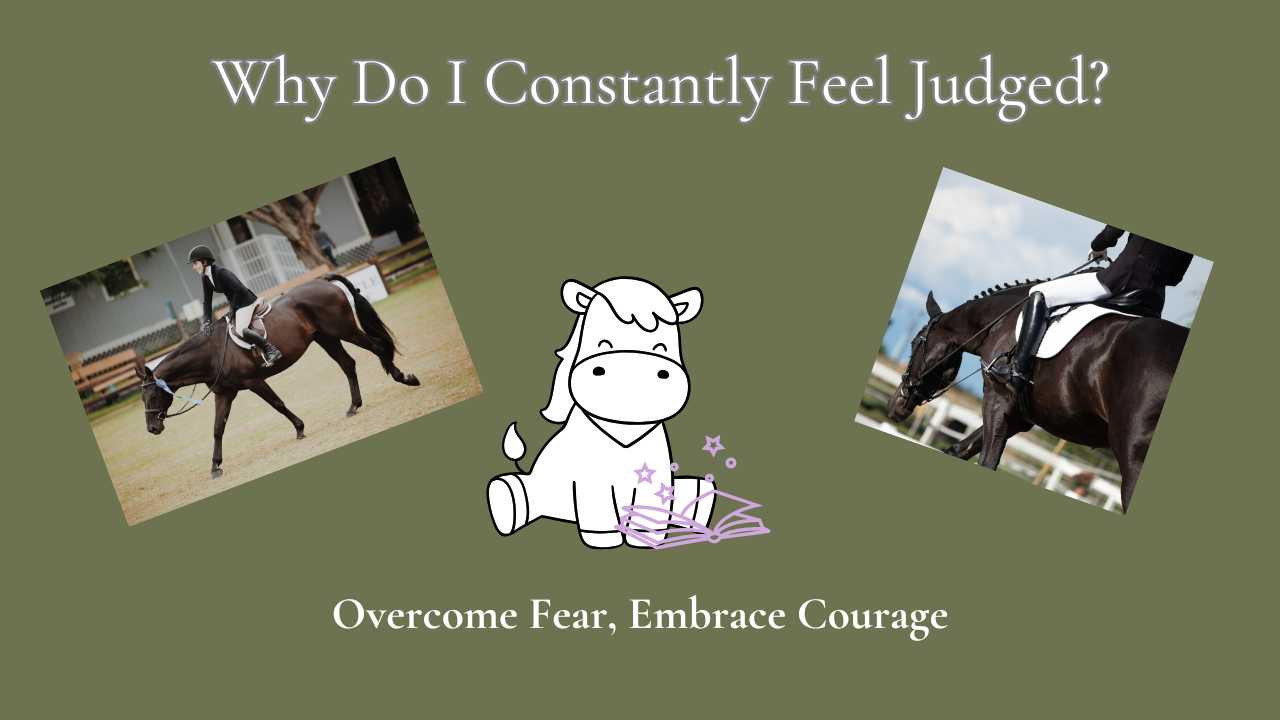
I remember taking my backyard hunter—the one my parents bought for me for a fraction of what most horses at the show cost—and competing against kids whose parents were paying 100 times more. In the hunter ring, that kind of thing matters. Sure, I could give my horse a great ride, but he didn’t have the natural form or movement that would win the class… or even place in most.
What’s really wild? We were paying money to be judged.
But that experience gave me something priceless: a foundation for not caring what others think. I learned to celebrate the rides that felt great, and to reflect and improve after the ones that didn’t. It taught me to accept being judged—and let it go.
Now, years later, I hear so many friends talk about how judgment—whether direct or indirect—gets under their skin. They stress about their hair, clothes, fitting in, or looking “just right.” That feeling of being judged eats at them.
But here’s the thing: it doesn’t have to be that way. Life isn’t about anyone else—it’s about you.
My Top 3 Tips to Stop Feeling Judged
1. Write down what makes you unique.
Take 30 minutes and list all the ways you’re different from everyone you know. No two people are the same. When you truly embrace what makes you unique, other people’s opinions start to matter a whole lot less.
Take 30 minutes and list all the ways you’re different from everyone you know. No two people are the same. When you truly embrace what makes you unique, other people’s opinions start to matter a whole lot less.
2. Use this mental trick from T. Harv Eker.
The next time you feel judged, try saying this silently to yourself (not out loud—it’s not about them):
"Good morning. I don’t give a BLEEP what you think!"
You can make “bleep” whatever you want. The key is this: feeling judged isn’t about them—it’s about how grounded you feel in being you, no matter what.
The next time you feel judged, try saying this silently to yourself (not out loud—it’s not about them):
"Good morning. I don’t give a BLEEP what you think!"
You can make “bleep” whatever you want. The key is this: feeling judged isn’t about them—it’s about how grounded you feel in being you, no matter what.
3. Find your flower and let it bloom.
Pick one thing that makes you different and celebrate it. I like to think of a garden—no two flowers are the same. Some are bright, some are wild, and some have a petal or two missing. But they all open to the sun. I love the image of a slightly flawed flower shining anyway, saying, “I may be imperfect, but here I am!”
For me, it’s laughing—a lot. Like, 400 times a day, even when it’s probably not appropriate. (Yes, even in church. 😅)
Pick one thing that makes you different and celebrate it. I like to think of a garden—no two flowers are the same. Some are bright, some are wild, and some have a petal or two missing. But they all open to the sun. I love the image of a slightly flawed flower shining anyway, saying, “I may be imperfect, but here I am!”
For me, it’s laughing—a lot. Like, 400 times a day, even when it’s probably not appropriate. (Yes, even in church. 😅)
Now it’s your turn.
What’s one thing that makes you unique—and how are you going to embrace it? I’d love to hear. Reply and let me know!
What’s one thing that makes you unique—and how are you going to embrace it? I’d love to hear. Reply and let me know!
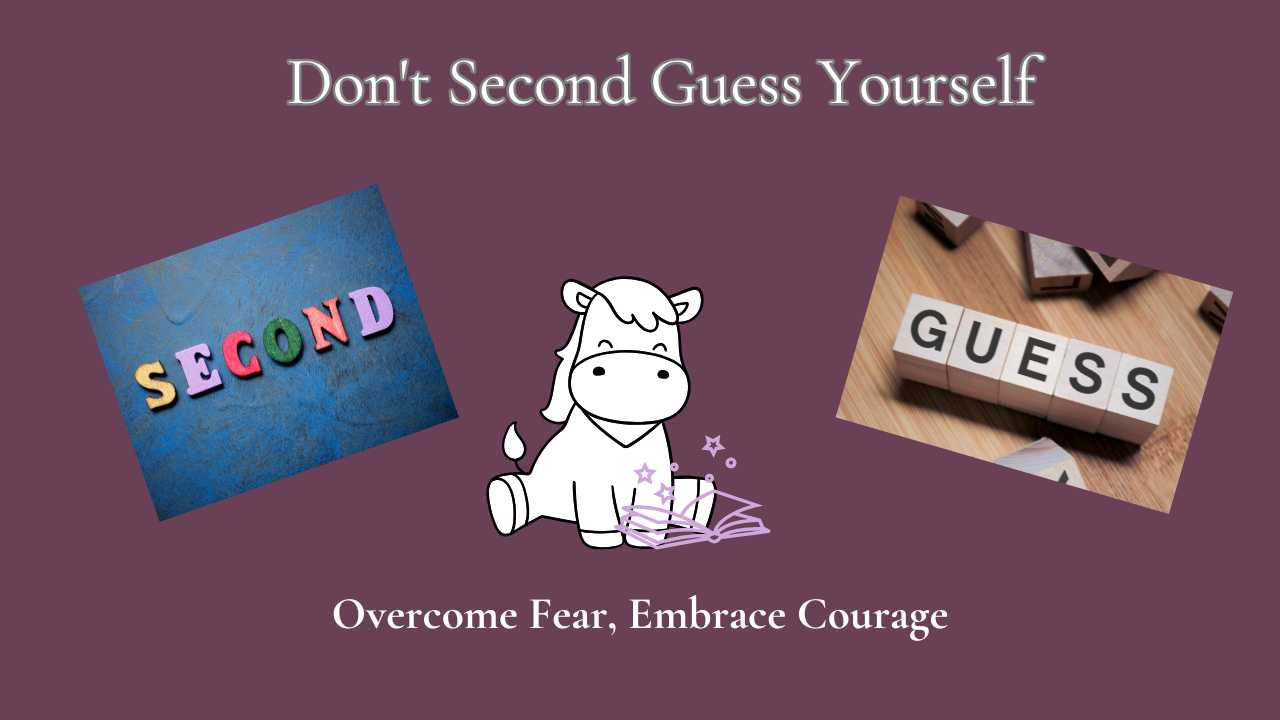
If you’ve ever sat in the saddle and suddenly felt your chest tighten, your thoughts race, or your brain says, “what if something goes wrong?”—you’re not alone.
Confidence in riding doesn’t come from perfect weather, the right boots, or a well-behaved horse (though those do help!). It comes from how we handle the thoughts that pop up—especially the ones that make us doubt ourselves.
What’s the secret to building real riding confidence?
It starts with recognizing that self-doubt doesn’t mean something is wrong.
It often means you’re growing, stretching, or returning to riding after a setback.
That inner dialogue—the one that whispers things like:
- “You’re not ready.”
- “You’re not as good as other riders.”
- “You should just give up.”
...isn’t proof you’re failing. It’s proof that your brain is trying to protect you from a perceived threat—even if the “threat” is just looking less than perfect.
But confidence isn’t about silencing the inner critic forever.
It’s about not giving it the reins.
It’s about not giving it the reins.
Here are 3 practical ways to build your riding confidence:
- Name your inner critic—and then disagree with it.
Give it a silly name. Hear what it says and answer back with truth. "Thanks Nerdie, but I AM ready for this!" - Visualize successful rides.
Your brain doesn’t know the difference between imagined success and real experience. Visualizing calm, smooth rides helps your nervous system believe they’re possible—and gets you one step closer. - Celebrate courage, not just outcomes.
Rode for 10 minutes even when you were nervous? That’s courage.
Mounted up after a long break? That’s courage.
Confidence is built in these small, brave moments—not in perfection.
Every rider—even the most experienced—has moments of doubt. The key is learning to ride with the doubt.
Want more support letting go of self-doubt and reconnecting with your confidence?
Tune into the latest podcast episode: Your Inner Critic Doesn’t Get to Ride: Listen Here!
Tune into the latest podcast episode: Your Inner Critic Doesn’t Get to Ride: Listen Here!
Let’s keep riding forward—one confident step at a time.
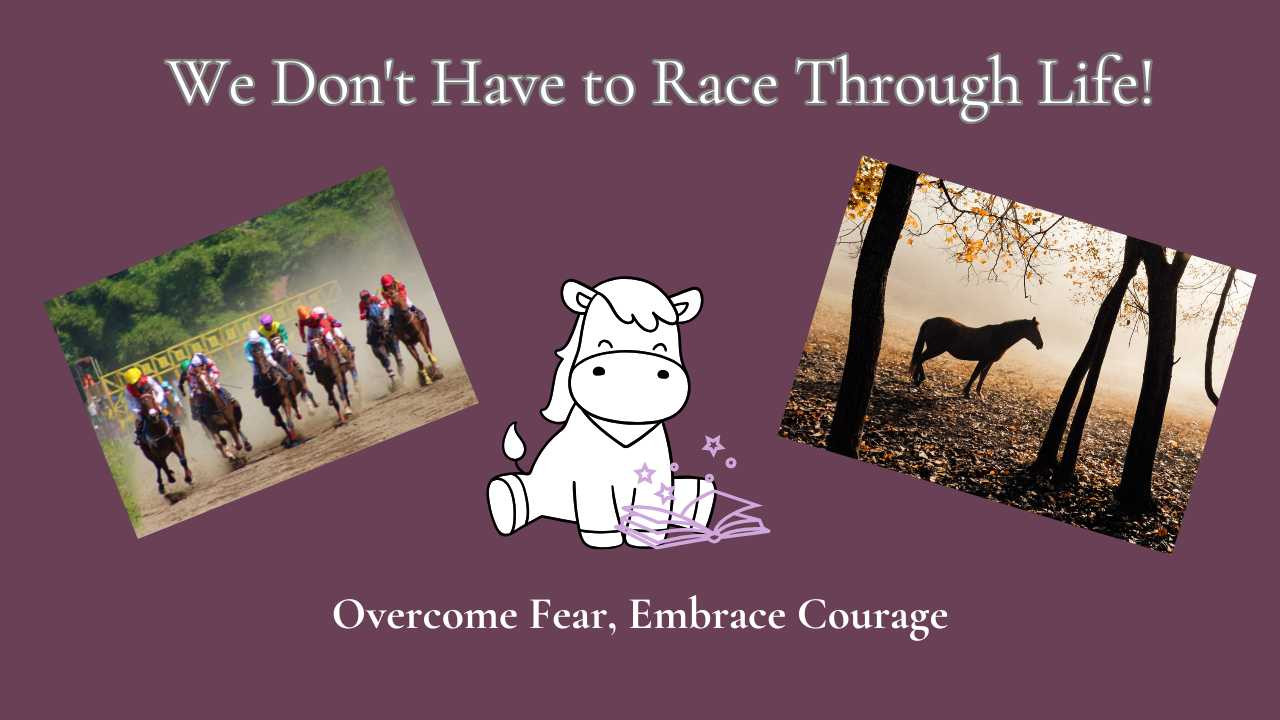
It was such a simple thing—I was putting water into my hot water pot.
And yet, I found myself pushing on the handle, hard, as if that would somehow make the water come out faster. It was totally subconscious. I have no idea how many years I’ve been doing this—pushing, hurrying, rushing—without even noticing.
But in that moment, I did notice. And it was shocking.
It instantly made me reflect: where else am I trying to speed through life?
We’ve all done it—tapped the steering wheel at a red light to try to “will” it green, scarfed down fast food so we could move on to the next task, or tried to multitask a dozen things at once. We’ve all been caught in the race.
But life is not meant to be raced through.
It’s meant to be enjoyed. Savored. Lived.
That old cliché, “Stop and smell the roses,” was spot on. But it’s not just about roses—it’s about the whole garden of life.
You know who really understands this? Horses.
Sure, mine sometimes race around the pasture, but most of the time, they’re just... chill. Grazing. Resting. Breathing. They wouldn’t care one bit how fast the water goes into the hot water pot.
The big question: How do I slow down and still accomplish everything?
What happened next surprised me.
I did slow down. I let the tension melt from my body. I relaxed.
And then... I accomplished more. I felt energized instead of drained. Calm instead of chaotic.
We don’t realize how much energy we waste living in stress mode. That same energy, when freed, can be used to actually live our life.
A Few Keys to Slowing Down:
- Notice what stresses you out. Write them down. Awareness is the first step.
- Tune into your body. Where do you feel tension? Scrunch up your muscles and then release them. Do this a few times—it feels amazing.
- Practice what we teach our horses. When our horses are stressed, we notice. We help them relax. Let’s turn that same care toward ourselves.
You don’t have to race through life to get things done. In fact, slowing down might just be the secret to doing it all—with more joy, more peace, and a lot less stress.
Check out my podcast if you want to hear my thoughts on this subject in "Permission
to Go Slow", Episode 109 of Turn Riding Fear Around.
